C. elegans
Recent articles
The Transmitter’s favorite essays of 2025
Throughout a tumultuous year in science, researchers opined on policy changes and funding uncertainty, as well as scientific trends and the impact of artificial-intelligence tools on the field.

The Transmitter’s favorite essays of 2025
Throughout a tumultuous year in science, researchers opined on policy changes and funding uncertainty, as well as scientific trends and the impact of artificial-intelligence tools on the field.
Whole-brain, bottom-up neuroscience: The time for it is now
Applying new tools to entire brains, starting with C. elegans, offers the opportunity to uncover how molecules work together to generate neural physiology and how neurons work together to generate behavior.
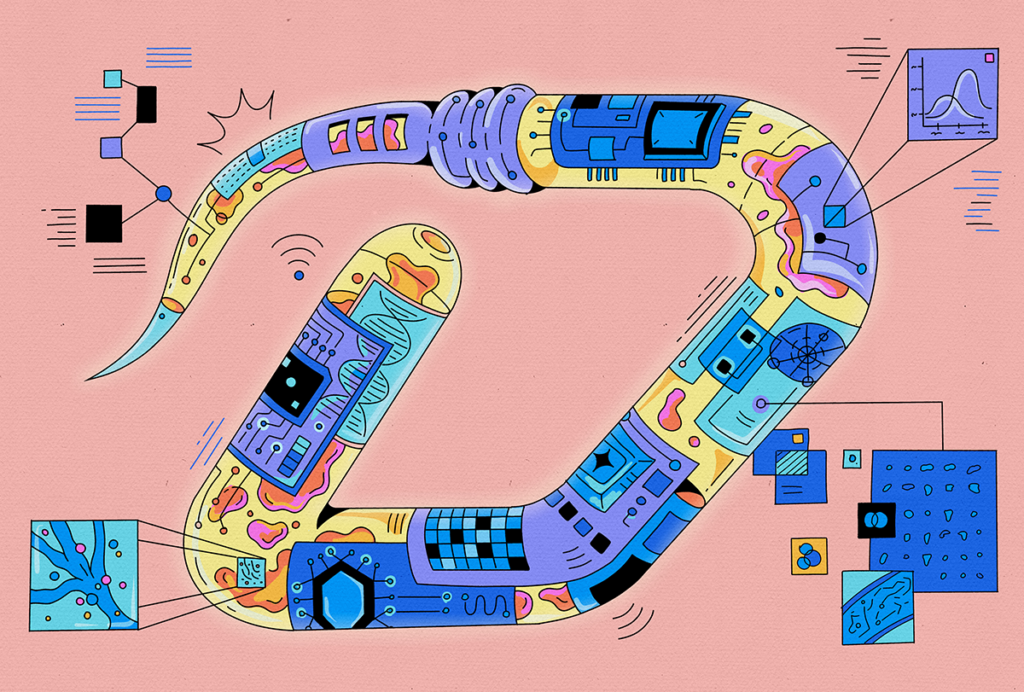
Whole-brain, bottom-up neuroscience: The time for it is now
Applying new tools to entire brains, starting with C. elegans, offers the opportunity to uncover how molecules work together to generate neural physiology and how neurons work together to generate behavior.
Worms help untangle brain structure/function mystery
The synaptic connectome of most animals bears little resemblance to functional brain maps, but it can still predict neuronal activity, according to two preprints that tackle the puzzle in C. elegans.
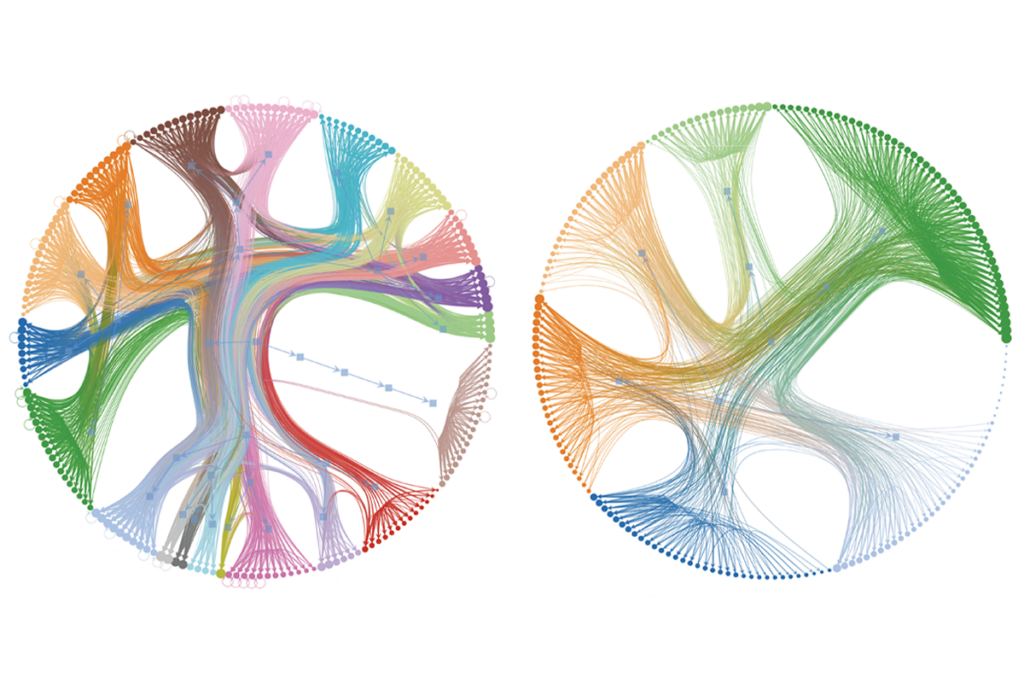
Worms help untangle brain structure/function mystery
The synaptic connectome of most animals bears little resemblance to functional brain maps, but it can still predict neuronal activity, according to two preprints that tackle the puzzle in C. elegans.
Neural population-based approaches have opened new windows into neural computations and behavior
Neural manifold properties can help us understand how animal brains deal with complex information, execute flexible behaviors and reuse common computations.
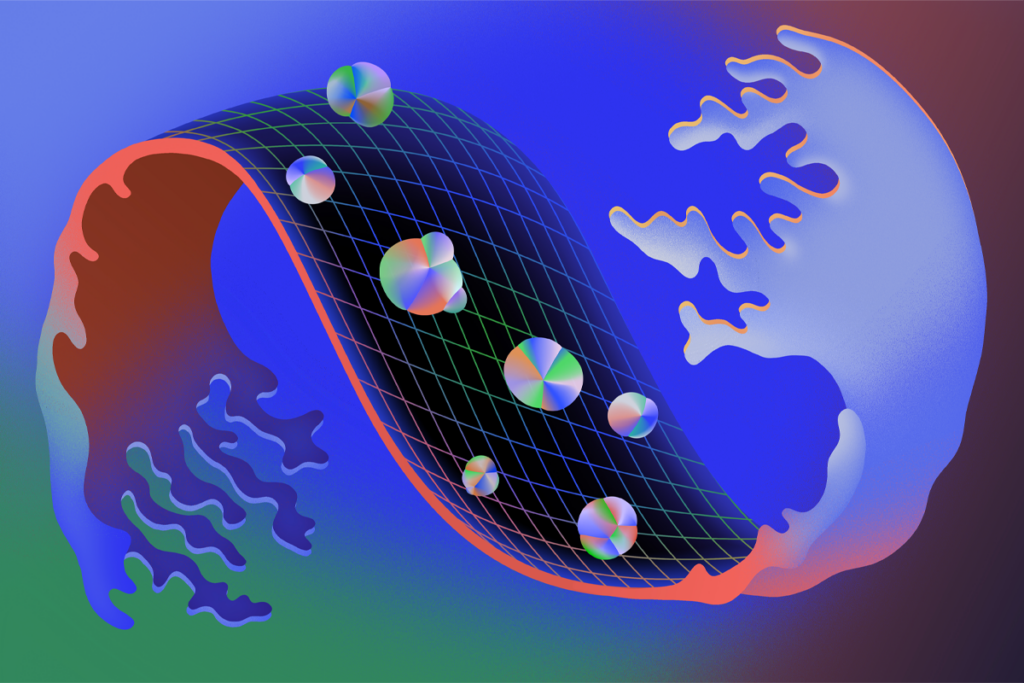
Neural population-based approaches have opened new windows into neural computations and behavior
Neural manifold properties can help us understand how animal brains deal with complex information, execute flexible behaviors and reuse common computations.
Standout neuroscience news in 2023
Did you miss any of our favorite stories from the past year? Revisit them here.
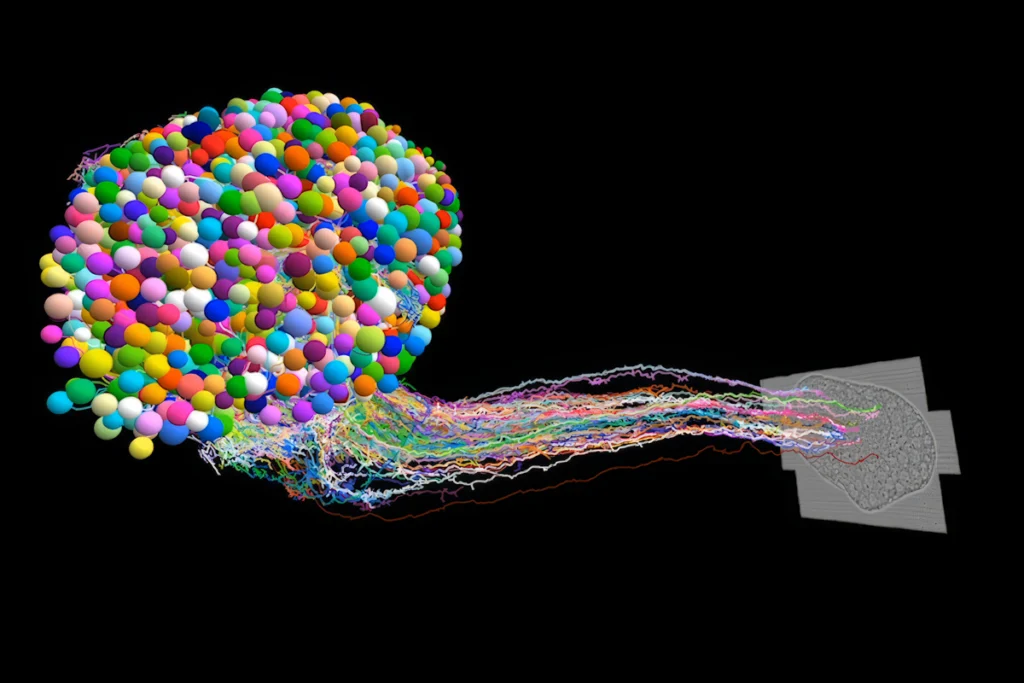
Standout neuroscience news in 2023
Did you miss any of our favorite stories from the past year? Revisit them here.
Plugging invisible gaps in the synaptic connectome
Two new maps of the roundworm nervous system detail how neurons communicate with short proteins called neuropeptides outside synapses.
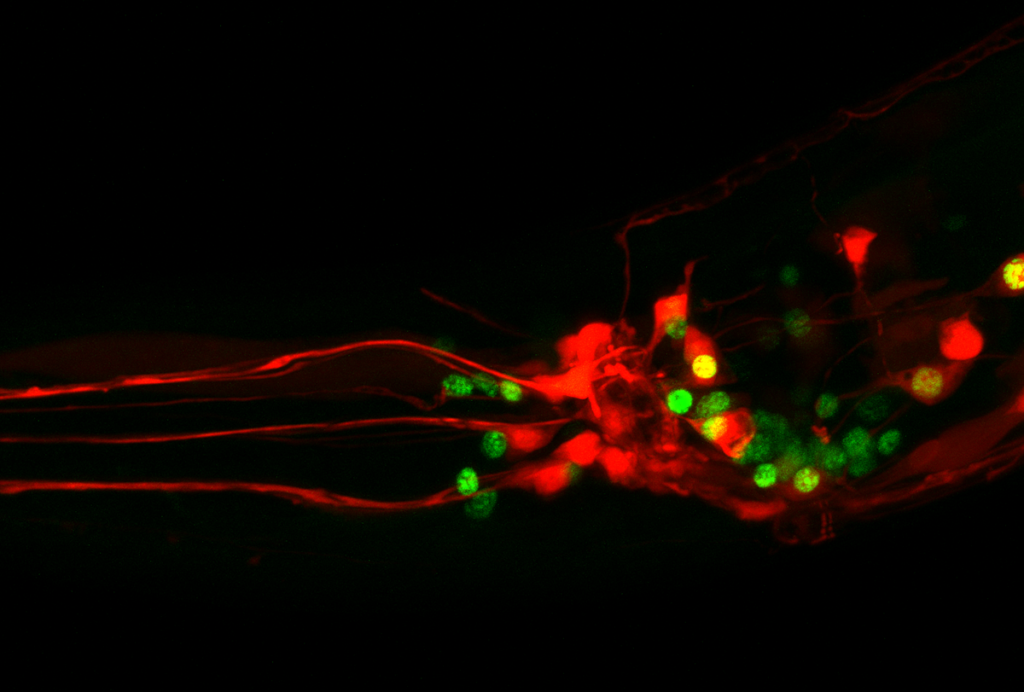
Plugging invisible gaps in the synaptic connectome
Two new maps of the roundworm nervous system detail how neurons communicate with short proteins called neuropeptides outside synapses.
Controlling neurons with ultrasound: Q&A with Sreekanth Chalasani
The new method, called sonogenetics, noninvasively manipulates neural circuits in mice.
Controlling neurons with ultrasound: Q&A with Sreekanth Chalasani
The new method, called sonogenetics, noninvasively manipulates neural circuits in mice.
Fish, frogs, flies and other fauna in scientific firsts
Over the past century, scientists have used a variety of animal models to advance their understanding of the developing brain and autism.

Fish, frogs, flies and other fauna in scientific firsts
Over the past century, scientists have used a variety of animal models to advance their understanding of the developing brain and autism.
What studying worms, flies and fish says about autism
Researchers are increasingly turning to simple animals to learn about autism biology and find leads for new drugs.

What studying worms, flies and fish says about autism
Researchers are increasingly turning to simple animals to learn about autism biology and find leads for new drugs.
Stimulant restores cell signaling, eases behavior issues in animals missing autism gene
Worms and zebrafish missing both copies of the gene CHD7 have disrupted cellular signaling, a dearth of inhibitory neurons and behavior changes — all of which are reversed by the stimulant drug ephedrine.

Stimulant restores cell signaling, eases behavior issues in animals missing autism gene
Worms and zebrafish missing both copies of the gene CHD7 have disrupted cellular signaling, a dearth of inhibitory neurons and behavior changes — all of which are reversed by the stimulant drug ephedrine.
Explore more from The Transmitter
The Transmitter’s most-read neuroscience book excerpts of 2025
Books by Nachum Ulanovsky, Nicole Rust, and Andrew Iwaniuk and Georg Striedter made the list of some of the year's most engaging neuroscience titles.

The Transmitter’s most-read neuroscience book excerpts of 2025
Books by Nachum Ulanovsky, Nicole Rust, and Andrew Iwaniuk and Georg Striedter made the list of some of the year's most engaging neuroscience titles.
Neuroscience’s leaders, legacies and rising stars of 2025
Here are seven stories from the past year about some of the field’s most engaging figures.

Neuroscience’s leaders, legacies and rising stars of 2025
Here are seven stories from the past year about some of the field’s most engaging figures.
The Transmitter’s top news articles of 2025
Check out some of our most-read stories, covering neuroscience funding and policy changes in the United States, and methodological issues in high-profile neuroscience papers.

The Transmitter’s top news articles of 2025
Check out some of our most-read stories, covering neuroscience funding and policy changes in the United States, and methodological issues in high-profile neuroscience papers.